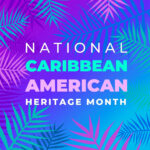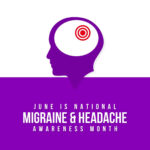Vision Research Month is observed in June to illuminate the leaps and bounds being made in eye research. Each year, a cohort of leading scientists, doctors, and intellectuals share their progress on an issue of urgent care in a month-long assembly, and research papers are published in the concerned area. The holiday is an initiative of Prevent Blindness and is observed under the purview of the National Institute of Health. Celebrated after Healthy Vision Month in May, Vision Research Month recognizes the challenges in ocular disease research.
History of Vision Research Month
We’ve come a long way since the discovery of visual aids to improve vision. From Aristotle’s ‘layers of the eye’ to Jacques Daviel’s successful extraction of cataracts, there has been tremendous progress in the identification, prevention, and treatment of thousands of ocular diseases in the last couple of centuries.
Vision Research Month celebrates the progress being made in the field of ophthalmology. Humans have always been curious about the functionality of the eye, and how we can control the natural deterioration of our vision. The 18th century is best known for the consolidation of eye knowledge, and the various treatments that were locally introduced by leading figures in the field. The treatment of glaucoma stands out in particular from that period. The introduction of the ophthalmoscope in the 19th century brought researchers together for a deepened study of the eye. The increased level of precision also made the treatment of various ocular diseases possible. Throughout the 20th century, several strides were made in the field of cornea, oncology, cataract, and pediatrics.
Vision care in the 21st century is based on preventative measures to prevent blindness. More than 12 million people in the United States suffer from vision impairment. Vision Research Month shares the progress that has been made in affordable eye care along with the inventions that have vastly improved the living conditions of the permanently blind.
Vision Research Month timeline
President Lyndon B. Johnson establishes the first public research center dedicated to human visual disorders.
The National Advisory Eye Council publishes the first comprehensive assessment titled “The Vision Research Program Planning.”
Prevent Blindness establishes a vision research and prevention program through bipartisan consensus.
Prevent Blindness forms a national coordinating body to provide state-level assistance and affordable care to far-reaching communities.
Vision Research Month FAQs
How can I register for eye donation?
You can sign up for this noble cause at the government’s official site for organ donation. Visit OrganDonor.gov
Who invented prescription glasses?
Salvino D’Armate is credited with the invention of glasses, although this information has been widely debunked by historians. The idea behind them may have existed as early as 1000 B.C.
What is the leading cause of blindness?
Cataracts are the leading cause of total blindness in the United States. Diabetes is also a common trigger.
How to Observe Vision Research Month
Catch up on the research
The National Institute of Health publishes the latest journals of all leading researchers. Learn about eye health, ocular diseases, and preventative measures, from hundreds of papers that culminate decades of findings and contributions from industry leaders.
Book an appointment
Regular eye checkups are a great way to detect any abnormalities in your vision. Constant monitoring is also essential to discover several systemic diseases like high blood pressure and diabetes. Mark the month with appointments, for you and your family, to the nearest ophthalmologist, and make it a biannual affair as recommended.
Join the mission
Join the mission to eradicate preventable blindness by spreading the word about healthy vision with N.I.H.’s shareable graphics, social media templates, and newsletters. You can also share the exciting developments in the world of vision research with the hashtag #VisionResearchMonth.
5 Latest Inventions To Aid The Visually Challenged
Lechal shoes
Shoes connected to your phone’s G.P.S. via Bluetooth to guide you on your way.
Colorblind glasses
Specially-designed glasses with EnChroma lenses to help colorblind people see through different hues.
Bionic eyes
Artificial eye implantation to recover vision in patients suffering from retinitis pigmentosa.
Guide dots
A free Android app that scans your surroundings and uses geotagging to inform you of people nearby.
iBrailler notes
A free iOS app with a flat-screen brailler to aid typing and general use of a tablet for the visually impaired.
Why Vision Research Month is Important
It’s a celebration of progress
Vision Research Month brings scholars together to share their findings and put up a united front against the leading ocular diseases. It also celebrates the progress that’s being made in unconventional areas, such as genome sequencing and transplants.
It sheds light on global challenges
Access to medication and visual aids in the global community is a long-ignored emergency that needs to be talked about. The month of June promises to focus the world on newer, affordable technology, and 3.D. printing, reaching the remotest areas to provide eye care to the needy.
It brings funding
The holiday initiative is affiliated with the National Institute of Health. It offers the biggest platform for emerging researchers and scientists to secure funding for their projects.
Vision Research Month dates
| Year | Date | Day |
|---|---|---|
| 2026 | June 1 | Monday |
| 2027 | June 1 | Tuesday |
| 2028 | June 1 | Thursday |
| 2029 | June 1 | Friday |
| 2030 | June 1 | Saturday |
















































































































